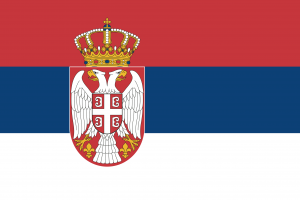Language/Serbian/Grammar/Verbs:-Reflexive-Verbs
 Հայերէն
Հայերէն Български език
Български език 官话
官话 官話
官話 Hrvatski jezik
Hrvatski jezik Český jazyk
Český jazyk Nederlands
Nederlands English
English Suomen kieli
Suomen kieli Français
Français Deutsch
Deutsch עברית
עברית हिन्दी
हिन्दी Magyar
Magyar Bahasa Indonesia
Bahasa Indonesia فارسی
فارسی Italiano
Italiano 日本語
日本語 Қазақ тілі
Қазақ тілі 한국어
한국어 Lietuvių kalba
Lietuvių kalba Νέα Ελληνικά
Νέα Ελληνικά Şimali Azərbaycanlılar
Şimali Azərbaycanlılar Język polski
Język polski Português
Português Limba Română
Limba Română Русский язык
Русский язык Español
Español العربية القياسية
العربية القياسية Svenska
Svenska Wikang Tagalog
Wikang Tagalog தமிழ்
தமிழ் ภาษาไทย
ภาษาไทย Türkçe
Türkçe Українська мова
Українська мова Urdu
Urdu Tiếng Việt
Tiếng Việt
| ◀️ Verbs: Perfective and Imperfective — Previous Lesson | Next Lesson — Places around Town ▶️ |
As a Serbian language teacher with 20 years of experience, I understand the importance of learning reflexive verbs for students who want to master the Serbian language. In this lesson, we will explore the use of reflexive verbs in Serbian and provide examples to help you gain an understanding of when and how to use them.
With the completion of this lesson, consider investigating these related pages: How to Use Be & How to Use Have.
What Are Reflexive Verbs?
Reflexive verbs are used when the subject of the sentence performs an action on themselves. These verbs are formed by adding a reflexive pronoun to the end of the verb. In Serbian, reflexive verbs are usually in the present tense, but they could also be in the past or future tenses. Reflexive verbs are quite common in the Serbian language, and they are essential for expressing actions that someone performs on themselves. Here are some examples:
- Ja perem sebe – I wash myself
- Ti češljaš sebe – You comb yourself
- Oni briju sebe – They shave themselves
As you can see from the examples, the reflexive pronoun "sebe" changes according to the subject and the tense of the verb used.
How to Use Reflexive Verbs in Serbian
So how do you know when to use reflexive verbs? It is important to remember that reflexive verbs are used only when the subject of the sentence is also the object of the action. In other words, the subject performs the action on themselves. Here are some additional examples to help you understand better:
- Ja se umivam – I wash my face
- Ti se oblačiš – You get dressed
- Oni suzdržavaju se – They restrain themselves
- Mi ne smejemo se – We aren't laughing
- Vi se opuštate – You relax
Notice that in each sentence, the subject reflexive pronoun "se" changes according to the verb tense.
It is also important to remember that reflexive verbs take different forms in different persons (I, you, he/she/it, we, you, they). In Serbian, these forms are built by adding a reflexive pronoun to the end of the verb. Here are a few examples to help you understand better:
| Serbian | Pronunciation | English |
|---|---|---|
| Ja se budim | [ja se bʊdɪm] | I wake up |
| Ti se smeješ | [ti se smɛjɛʃ] | You are laughing |
| On/a se bori | [ɔn/ʌ sɛ bɔrɪ] | He/she fights |
| Mi se šalimo | [mi sɛ ʃalɪmɔ] | We joke |
| Vi se vozite | [vi sɛ vɔzɪtɛ] | You are driving |
| Oni/e se igraju | [ɔnɪ/ɛ sɛ ɪgraʝu] | They are playing |
As you can see, the reflexive pronoun "se" changes according to the verb tense and the subject of the sentence.
Tips for Mastering Reflexive Verbs
Here are a few tips to help you master reflexive verbs in Serbian:
- Practice, practice, practice! The more you use reflexive verbs, the more comfortable and natural they will become.
- Pay attention to verb tense and subject agreement. Remember that the reflexive pronoun changes according to the subject of the sentence.
- Learn common reflexive verbs and their meanings. Some common reflexive verbs in Serbian include prati se (wash up), buditi se (wake up), spustiti se (come down), voziti se (ride), and ruke umiti se (wash one's hands).
Conclusion
In conclusion, reflexive verbs are used in Serbian when the subject of a sentence performs an action on themselves. By adding the reflexive pronoun "se" to the end of the verb, you can express a wide range of actions in the Serbian language. With practice and patience, you can master reflexive verbs and add them to your growing Serbian language skills.
Sources
- Serbian verb aspect and reflexive verbs - Serbian language lessons
- Learn Serbian language – Fast Language Mastery
Excellent job on conquering this lesson! Consider delving into these related pages: Verbs: Future Tense & Verbs: Present Tense.
Other Lessons
- 0 to A1 Course
- Verbs: Perfective and Imperfective
- Comaratives and Superlatives
- Gender
- Future Tense
- Present Tense
- Conditional Tense
- Adjectives
- Verbs: Present Tense
| ◀️ Verbs: Perfective and Imperfective — Previous Lesson | Next Lesson — Places around Town ▶️ |

